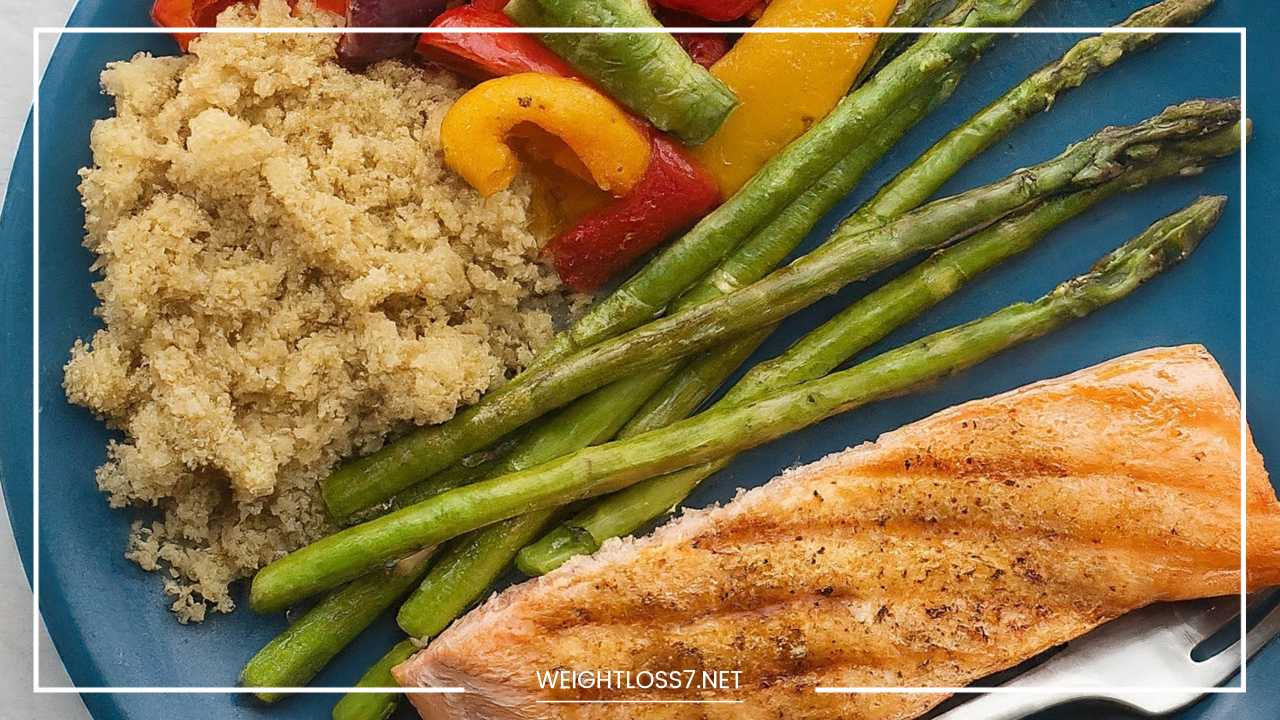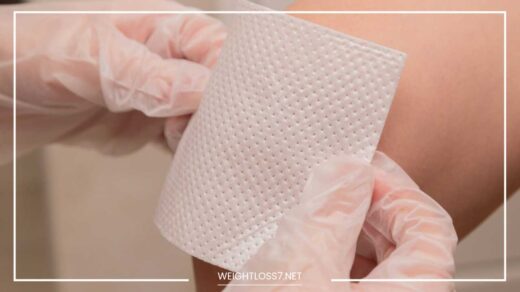South Beach Diet: A Detailed Look at Phases, Benefits, Drawbacks, and More

South Beach Diet
Unveiling the South Beach Diet: A Guide to Weight Loss and Lifestyle Change
In the ever-evolving landscape of weight loss trends, the South Beach Diet stands out as a structured program that emphasizes healthy habits for sustainable weight management.
Developed by Dr. Arthur Agatston, this approach focuses on differentiating “good” and “bad” carbohydrates and fats, aiming to regulate blood sugar levels, curb cravings, and promote lasting weight loss.
Let’s delve deeper into the South Beach Diet, exploring its phases, potential benefits and drawbacks, and how to determine if it’s the right fit for you.
A Deep Dive into the Three Phases
The South Beach Diet unfolds in three distinct phases, each designed to gradually guide you towards a healthier lifestyle:
- Phase 1: The Two-Week Jumpstart (Induction)
This initial phase is the most restrictive, lasting for fourteen crucial days. It eliminates sugary drinks, refined carbohydrates like white bread and pasta, most fruits (except berries), and unhealthy fats found in processed foods and fried items.
The focus shifts to lean protein sources like chicken, fish, and legumes, along with healthy fats from avocados, nuts, and olive oil.
This phase aims to jumpstart weight loss by breaking the body’s dependence on refined carbohydrates and sugary treats, potentially leading to a significant reduction in cravings.
Recipe Inspiration for Phase 1:
-
Grilled Salmon with Roasted Asparagus and Lemon Vinaigrette: A simple and satisfying meal packed with protein and healthy fats.
-
Spicy Chicken Stir-Fry with Broccoli and Peppers: This flavorful dish provides lean protein and essential vitamins from the vegetables.
-
Hard-boiled Eggs with Avocado and Tomato Slices: A quick and portable snack rich in protein and healthy fats.
-
Phase 2: Reintroduction and Healthy Choices
Phase 2 introduces a wider variety of healthy foods, allowing the reintroduction of whole grains, some fruits (excluding high-glycemic options like pineapple and watermelon), and low-fat dairy products back into your diet. Refined carbohydrates and sugary treats remain off-limits.
This phase is designed to be more flexible while still encouraging portion control and teaching you to make informed food choices that will benefit you in the long run.
Recipe Inspiration for Phase 2:
-
Quinoa Salad with Grilled Chicken and Black Beans: A protein-packed salad with complex carbohydrates from quinoa and fiber from black beans.
-
Whole-Wheat Toast with Sliced Turkey and Avocado: A balanced breakfast option with protein, healthy fats, and complex carbohydrates.
-
Berry Smoothie with Unsweetened Greek Yogurt and Spinach: A refreshing and nutritious snack that provides protein, vitamins, and fiber.
-
Phase 3: Healthy Living for Life (Maintenance)
The final phase is all about maintaining your weight loss by incorporating the healthy habits learned in the previous phases.
There are no strict food restrictions here, but you’ll be encouraged to prioritize lean protein, healthy fats, complex carbohydrates, and plenty of vegetables.
This phase empowers you to make sustainable choices for a healthy lifestyle, allowing for occasional indulgences as long as they remain balanced within your overall dietary approach.
Recipe Inspiration for Phase 3:
- Baked Salmon with Roasted Sweet Potato and Green Beans: A flavorful and nutrient-dense meal with protein, complex carbohydrates, and essential vitamins.
- Lentil Soup with Whole-Wheat Bread: A hearty and satisfying soup rich in protein and fiber.
- Trail Mix with Nuts, Seeds, and Dried Cranberries: A convenient and healthy snack option for on-the-go situations.
Beyond the Basics: A Look at the Science Behind the South Beach Diet
The South Beach Diet emphasizes low-glycemic index carbohydrates, which are digested more slowly and cause less of a spike in blood sugar levels compared to refined carbohydrates.
This approach can potentially benefit those with prediabetes or type 2 diabetes by promoting better blood sugar control.
Additionally, the focus on lean protein and healthy fats promotes satiety, keeping you feeling fuller for longer and reducing the urge to snack frequently.
However, it’s important to note that the diet’s classification of “good” and “bad” carbs may be an oversimplification. All carbohydrates can be part of a healthy diet in moderation.
The key lies in choosing whole grains, fruits, and vegetables over refined carbohydrates like white bread, pasta, and sugary treats. These complex carbohydrates provide essential nutrients and dietary fiber, promoting gut health and overall well-being.
Addressing Potential Concerns and Individualized Needs
While the South Beach Diet offers a structured approach to weight loss, it’s essential to consider its potential drawbacks and individual needs:
- Restrictive Nature of Phase 1: The initial phase can be challenging due to its strict limitations on certain foods. This might not be sustainable for everyone, especially those with active lifestyles or social commitments.
- Focus on Processed Vegetable Oils: The diet allows processed vegetable oils like canola oil. While these are generally considered better than unhealthy fats like saturated and trans fats, some research suggests unprocessed fats like olive oil or avocado oil might be even more beneficial for heart health.
Making the South Beach Diet Work for You
The South Beach Diet can be a valuable tool for weight loss and adopting healthy habits, but it’s crucial to consider your individual needs and preferences. Here are some tips for maximizing your success:
- Consult Your Doctor: Before starting any new diet, especially if you have any underlying health conditions like diabetes or heart disease, consult your doctor to ensure it’s safe and appropriate for you.
- Listen to Your Body: Pay attention to your hunger and fullness cues. Don’t restrict yourself to the point of feeling deprived, and adjust portion sizes based on your activity level.
- Find a Support System: Surround yourself with supportive friends and family who encourage your healthy choices. Consider joining online communities or support groups focused on the South Beach Diet for additional motivation and information sharing.
- Don’t Fear Customization: While the South Beach Diet provides a framework, don’t be afraid to customize it to fit your preferences and dietary needs. Explore vegetarian or vegan adaptations if that aligns with your lifestyle.
- Seek Professional Guidance: A registered dietitian can personalize the South Beach Diet to your specific needs and goals. They can help you address any nutritional deficiencies and ensure you’re getting the right balance of macronutrients for optimal health.
Embracing a Sustainable Approach to Weight Loss
Regardless of whether you choose the South Beach Diet, remember that sustainable weight loss is about creating healthy habits for life. Here are some core principles to consider:
- Focus on Whole, Unprocessed Foods: Prioritize fruits, vegetables, whole grains, and lean protein sources. These foods are generally more nutrient-dense and keep you feeling fuller for longer compared to processed options.
- Incorporate Healthy Fats: Include healthy fats like avocados, nuts, and olive oil in your diet. These fats provide essential nutrients and promote satiety.
- Practice Mindful Eating: Pay attention to hunger and fullness cues. Avoid distractions like watching TV or scrolling through your phone while eating. Savor your food and chew thoroughly to aid digestion and promote feelings of satisfaction.
- Stay Hydrated: Drinking plenty of water throughout the day can curb cravings, improve digestion, and support overall health.
- Move Your Body: Regular physical activity is crucial for weight management and overall well-being. Aim for a combination of moderate-intensity cardio and strength training exercises.
The South Beach Diet: A Final Word
The South Beach Diet offers a structured approach to weight loss, promoting healthy habits and a focus on whole, unprocessed foods. However, it’s important to be aware of its limitations and prioritize tailoring it to your individual needs.
By combining the South Beach Diet principles with a balanced approach to diet and exercise, you can create a sustainable weight loss plan that fosters a healthy and fulfilling lifestyle.
Remember, consult your doctor before starting any new diet and don’t hesitate to seek professional guidance from a registered dietitian for personalized support.
The South Beach Diet: A Peek into the Future
The South Beach Diet has been around for decades, and as with any approach to nutrition, it’s constantly evolving to adapt to new research and dietary trends. Here’s a glimpse into what the future might hold for the South Beach Diet:
-
A Greater Emphasis on Gut Health: The microbiome, the community of bacteria in our gut, plays a crucial role in digestion, immunity, and overall health. The South Beach Diet might incorporate more prebiotic and probiotic foods to support a healthy gut microbiome. Prebiotics act as food for beneficial gut bacteria, while probiotics directly introduce these beneficial bacteria into the gut.
-
Personalization Through Technology: Advancements in technology could lead to personalized versions of the South Beach Diet. Imagine apps or online tools that analyze your individual needs, genetics, and lifestyle to create a customized plan with specific food recommendations and portion sizes.
-
Focus on Sustainability and Environmental Impact: The future of the South Beach Diet might embrace a more sustainable approach, encouraging locally sourced, seasonal produce and minimizing processed foods with excessive packaging. This aligns with the growing interest in eco-friendly food choices.
-
Flexibility and Adaptability: The South Beach Diet could become more flexible, acknowledging that dietary needs can change throughout life. Different phases might be adjusted to accommodate various stages, such as pregnancy, breastfeeding, or managing specific health conditions.
-
Integration with Mindfulness Practices: The future South Beach Diet might incorporate mindfulness practices like mindful eating to promote a deeper connection with food and enhance the overall experience of healthy eating.
A Journey, Not a Destination
The South Beach Diet, or any dietary approach for that matter, is a journey, not a destination. It’s about finding healthy habits that you can maintain for the long term.
By understanding the core principles, potential benefits and drawbacks, and tailoring the plan to your individual needs, you can leverage the South Beach Diet as a stepping stone towards a healthier and more fulfilling lifestyle.
Remember, sustainable weight loss and a healthy relationship with food are the ultimate goals.

















